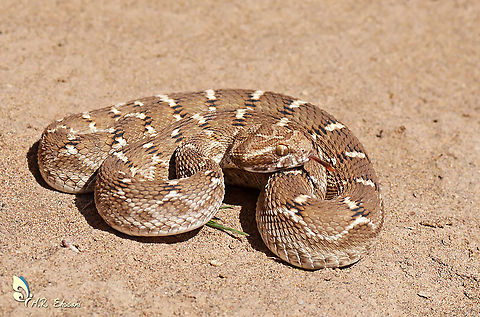
Introduction
The Saw-scaled Viper (Echis carinatus and related species) may not be the largest or most visually intimidating snake, but it is arguably among the deadliest. Known for its irritable disposition, lethal venom, and wide distribution across some of the most arid regions on Earth, this snake has earned a notorious reputation in the world of herpetology.
Physical Description
-
Size: Typically 30 to 90 cm (1 to 3 feet) in length
-
Color: Varied, often sandy brown, gray, or reddish, with pale crossbands or markings that provide excellent camouflage
-
Scales: Its name comes from the strongly keeled scales along its sides, which produce a rasping or "sawing" sound when rubbed together — a defensive behavior unique to this genus.
Habitat and Range
Saw-scaled Vipers inhabit:
-
Dry regions: deserts, scrublands, rocky outcrops, and semi-arid areas
-
Geographical range: North Africa, the Middle East, India, Pakistan, Sri Lanka, and parts of Southeast Asia
They are nocturnal and often hide under rocks, debris, or burrow during the heat of the day.
Behavior
-
Aggression: Known for being quick-tempered and striking rapidly when threatened
-
Warning sound: When alarmed, it coils into a figure-eight posture and rubs its scales together to create a distinctive sizzling or hissing noise
-
Feeding habits: Carnivorous, feeding on rodents, lizards, frogs, and invertebrates
Venom and Medical Importance
-
Venom type: Hemotoxic — destroys blood cells, causes internal bleeding and tissue damage
-
Fatality risk: Though not the most toxic venom by weight, the Saw-scaled Viper is responsible for a significant proportion of snakebite deaths globally due to its abundance in populated areas and tendency to bite without much provocation
-
Treatment: Antivenom is available, but access can be limited in rural regions. Prompt medical care is critical.
Conservation Status
Most species of Saw-scaled Vipers are not currently endangered, though their populations are affected by habitat destruction and human conflict. Because of their medical significance, they are also studied for venom research and antivenom development.
Interesting Facts
-
The viper’s “sizzling” warning sound is one of the most unique among snakes
-
Despite their danger, they are small enough to be easily missed, which increases the risk of accidental bites
-
Their venom is being studied for potential use in developing drugs for blood pressure and clotting disorders
Conclusion
The Saw-scaled Viper is a prime example of how danger in the animal kingdom doesn’t always come in large packages. This small, secretive snake combines potent venom with a pugnacious attitude, making it both feared and respected. Understanding and respecting its habitat is crucial, especially for those living in regions where these snakes are common.

You must be logged in to post a comment.